- Grades 6-12
- School Leaders
Win a $200 Gift Certificate From ThriftBooks!🎁

76 Easy Science Experiments Using Materials You Already Have On Hand
Because science doesn’t have to be complicated.
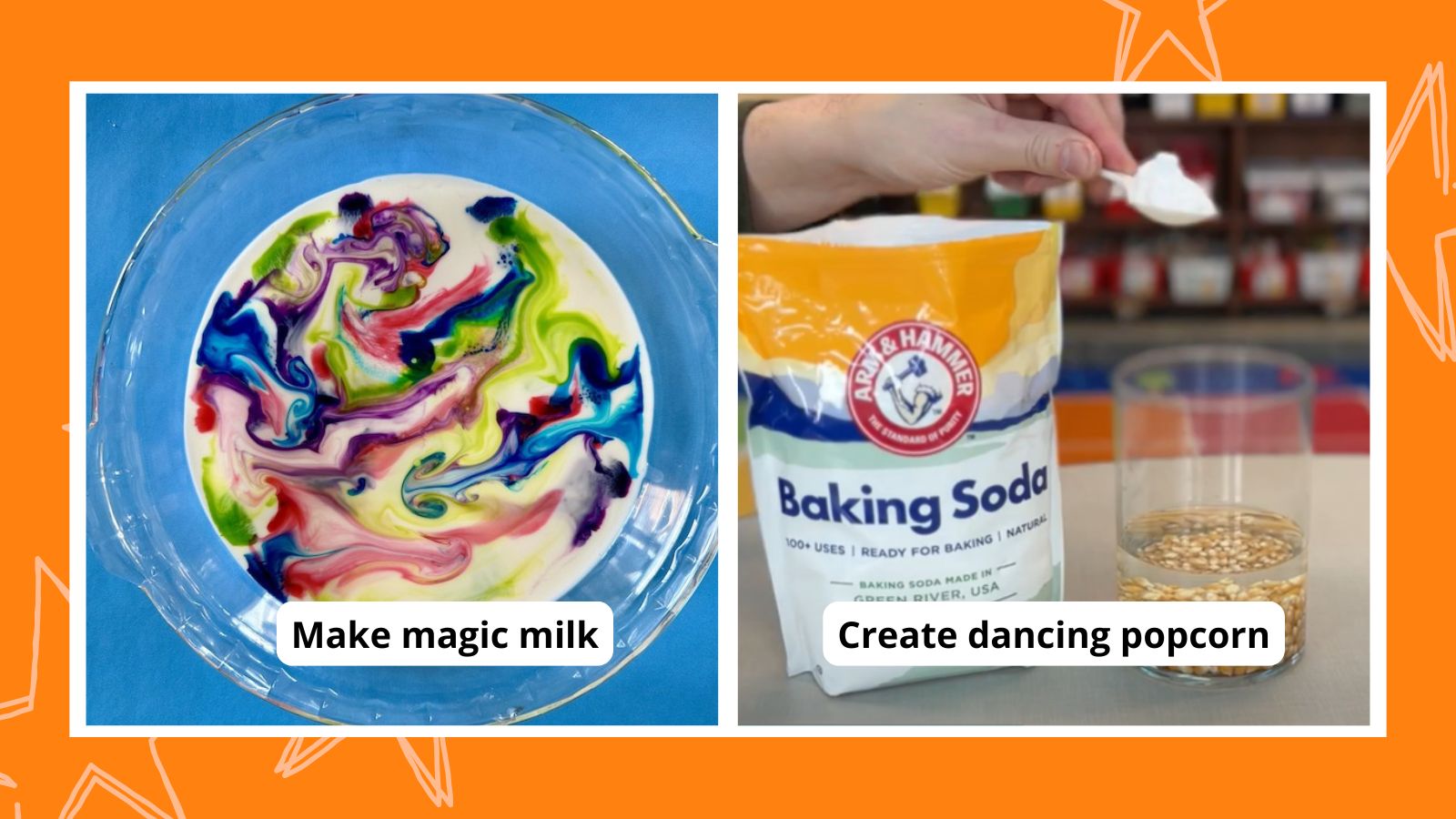
If there is one thing that is guaranteed to get your students excited, it’s a good science experiment! While some experiments require expensive lab equipment or dangerous chemicals, there are plenty of cool projects you can do with regular household items. We’ve rounded up a big collection of easy science experiments that anybody can try, and kids are going to love them!
Easy Chemistry Science Experiments
Easy physics science experiments, easy biology and environmental science experiments, easy engineering experiments and stem challenges.
Also, be sure to grab your free printable science experiment recording sheet to use with any of the experiments below.
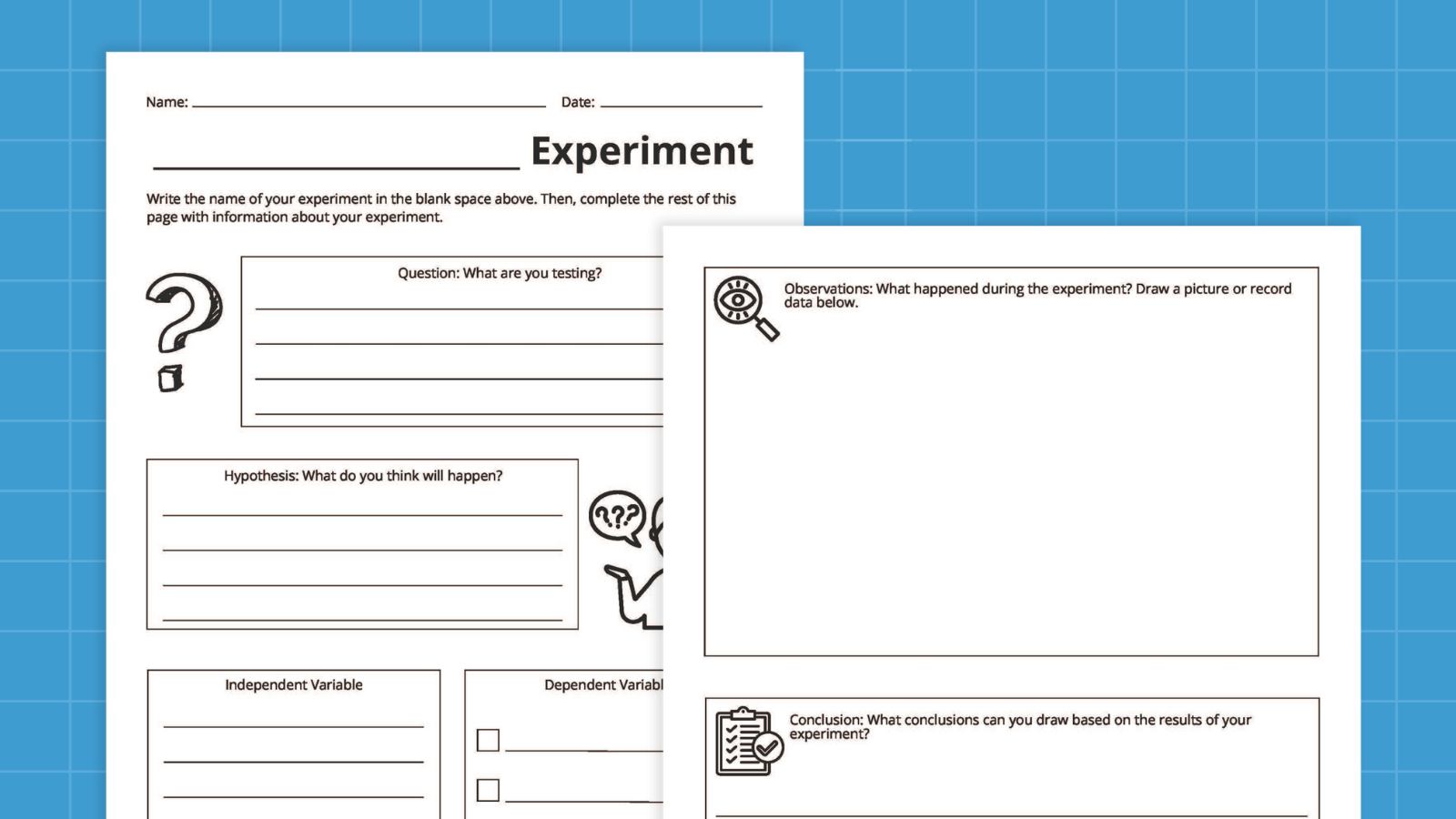
1. Taste the rainbow
Teach your students about diffusion while creating a beautiful and tasty rainbow. Tip: Have extra Skittles on hand so your class can eat a few!
Learn more: Skittles Diffusion
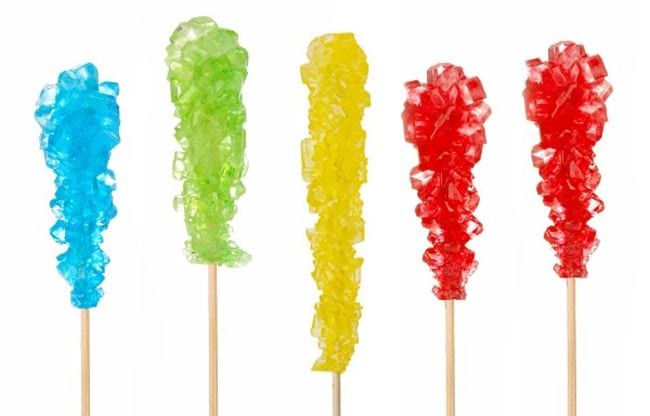
2. Crystallize sweet treats
Crystal science experiments teach kids about supersaturated solutions. This one is easy to do at home, and the results are absolutely delicious!
Learn more: Rock Candy Experiment
3. Make a volcano erupt
This classic experiment demonstrates a chemical reaction between baking soda (sodium bicarbonate) and vinegar (acetic acid), which produces carbon dioxide gas, water, and sodium acetate.
Learn more: Baking Soda Volcano (Guide + Printable Reflection Sheet)
4. Make elephant toothpaste
This fun project uses yeast and a hydrogen peroxide solution to create overflowing “elephant toothpaste.” Tip: Add an extra fun layer by having kids create toothpaste wrappers for plastic bottles.
Learn more: Elephant Toothpaste (Guide + Printable Reflection Sheet)
5. Blow the biggest bubbles you can
Add a few simple ingredients to dish soap solution to create the largest bubbles you’ve ever seen! Kids learn about surface tension as they engineer these bubble-blowing wands.
Learn more: Giant Soap Bubbles (Guide + Printable Reflection Sheet)
6. Demonstrate the “magic” leakproof bag
All you need is a zip-top plastic bag, sharp pencils, and water to blow your kids’ minds. Once they’re suitably impressed, teach them how the “trick” works by explaining the chemistry of polymers.
Learn more: Leakproof Bag (Guide + Printable Reflection Sheet)
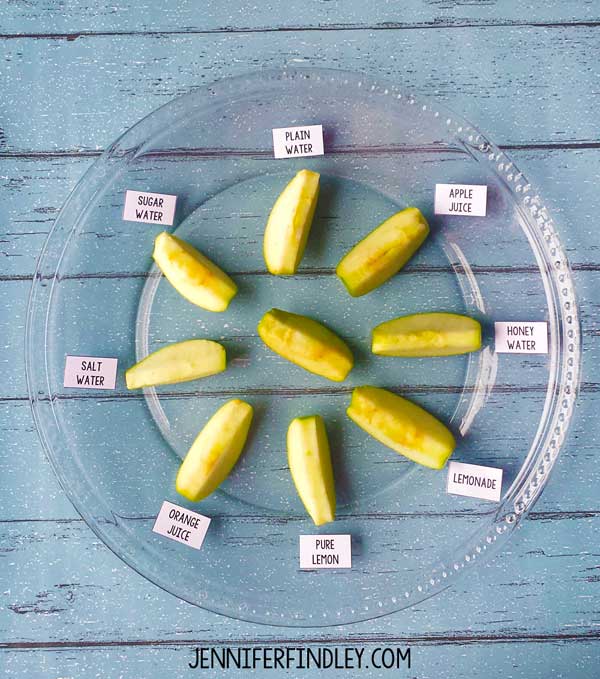
7. Use apple slices to learn about oxidation
Have students make predictions about what will happen to apple slices when immersed in different liquids, then put those predictions to the test. Have them record their observations.
Learn more: Apple Oxidation
8. Float a marker man
Their eyes will pop out of their heads when you “levitate” a stick figure right off the table! This experiment works due to the insolubility of dry-erase marker ink in water, combined with the lighter density of the ink.
Learn more: Floating Marker Man

9. Discover density with hot and cold water
There are a lot of easy science experiments you can do with density. This one is extremely simple, involving only hot and cold water and food coloring, but the visuals make it appealing and fun.
Learn more: Hot and Cold Water Science Experiment

10. Layer more liquids
This density demo is a little more complicated, but the effects are spectacular. Slowly layer liquids like honey, dish soap, water, and rubbing alcohol in a glass. Kids will be amazed when the liquids float one on top of the other like magic (except it is really science).
Learn more: Layered Liquids

11. Grow a carbon sugar snake
Easy science experiments can still have impressive results. This eye-popping chemical reaction demonstration only requires simple supplies like sugar, baking soda, and sand.
Learn more: Carbon Sugar Snake
12. Mix up some slime
Tell kids you’re going to make slime at home, and watch their eyes light up! There are a variety of ways to make slime, so try a few different recipes to find the one you like best.
Learn more: 4 Slime Recipes (Guide + Printable Reflection Sheet)

13. Make homemade bouncy balls
These homemade bouncy balls are easy to make since all you need is glue, food coloring, borax powder, cornstarch, and warm water. You’ll want to store them inside a container like a plastic egg because they will flatten out over time.
Learn more: Make-Your-Own Bouncy Balls

14. Create eggshell chalk
Eggshells contain calcium, the same material that makes chalk. Grind them up and mix them with flour, water, and food coloring to make your very own sidewalk chalk.
Learn more: Eggshell Chalk
15. Make naked eggs
This is so cool! Use vinegar to dissolve the calcium carbonate in an eggshell to discover the membrane underneath that holds the egg together. Then, use the “naked” egg for another easy science experiment that demonstrates osmosis .
Learn more: Egg and Vinegar Experiment (Guide + Printable Reflection Sheet)
16. Turn milk into plastic
This sounds a lot more complicated than it is, but don’t be afraid to give it a try. Use simple kitchen supplies to create plastic polymers from plain old milk. Sculpt them into cool shapes when you’re done.

17. Test pH using cabbage
Teach kids about acids and bases without needing pH test strips. Simply boil some red cabbage and use the resulting water to test various substances—acids turn red and bases turn green.
Learn more: Cabbage pH

18. Clean some old coins
Use common household items to make old oxidized coins clean and shiny again in this simple chemistry experiment. Ask kids to predict (hypothesize) which will work best, then expand the learning by doing some research to explain the results.
Learn more: Cleaning Coins

19. Pull an egg into a bottle
This classic easy science experiment never fails to delight. Use the power of air pressure to suck a hard-boiled egg into a jar, no hands required.
Learn more: Egg in a Bottle
20. Blow up a balloon without blowing
Chances are good you probably did easy science experiments like this when you were in school. The baking soda and vinegar balloon experiment demonstrates the reactions between acids and bases when you fill a bottle with vinegar and a balloon with baking soda.
Learn more: Baking Soda and Vinegar Balloon (Guide + Printable Reflection Sheet)
21. Assemble a DIY lava lamp
This 1970s trend is back—as an easy science experiment! This activity combines acid-base reactions with density for a totally groovy result.
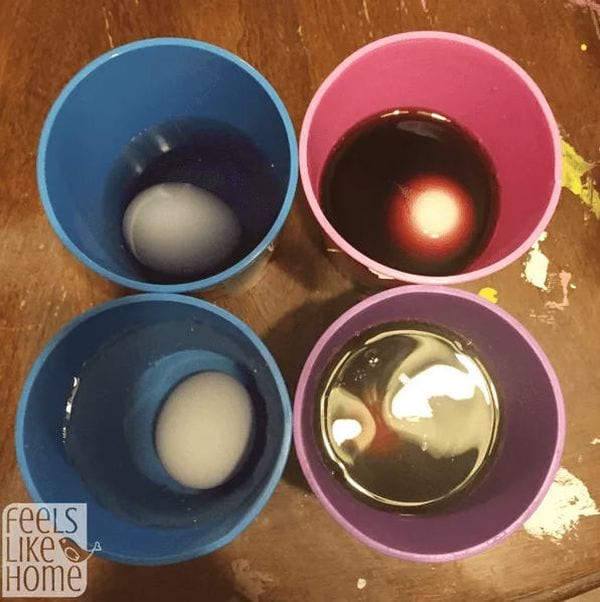
22. Explore how sugary drinks affect teeth
The calcium content of eggshells makes them a great stand-in for teeth. Use eggs to explore how soda and juice can stain teeth and wear down the enamel. Expand your learning by trying different toothpaste-and-toothbrush combinations to see how effective they are.
Learn more: Sugar and Teeth Experiment
23. Mummify a hot dog
If your kids are fascinated by the Egyptians, they’ll love learning to mummify a hot dog! No need for canopic jars , just grab some baking soda and get started.
24. Extinguish flames with carbon dioxide
This is a fiery twist on acid-base experiments. Light a candle and talk about what fire needs in order to survive. Then, create an acid-base reaction and “pour” the carbon dioxide to extinguish the flame. The CO2 gas acts like a liquid, suffocating the fire.
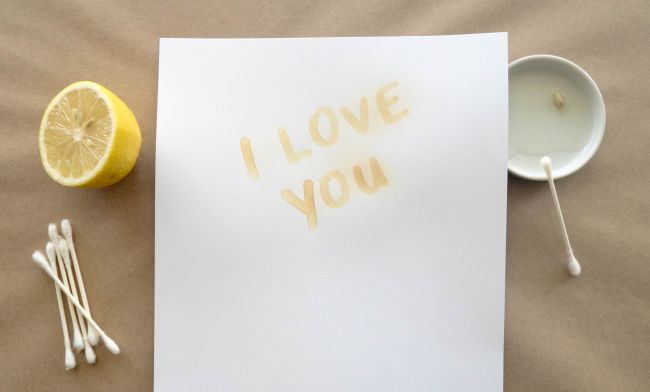
25. Send secret messages with invisible ink
Turn your kids into secret agents. Write messages with a paintbrush dipped in lemon juice, then hold the paper over a heat source and watch the invisible become visible as oxidation goes to work.
Learn more: Invisible Ink
26. Create dancing popcorn
This is a fun version of the classic baking soda and vinegar experiment, perfect for the younger crowd. The bubbly mixture causes popcorn to dance around in the water.
Learn more: Dancing Popcorn (Guide + Printable Reflection Sheet)
27. Shoot a soda geyser sky-high
You’ve always wondered if this really works, so it’s time to find out for yourself. Kids will marvel at the chemical reaction that sends diet soda shooting high in the air when Mentos are added.
Learn more: Mentos and Coke Experiment (Guide + Printable Reflection Sheet)
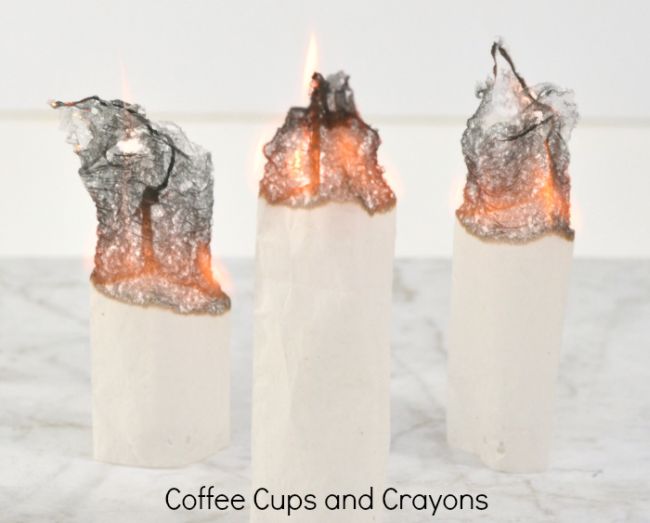
28. Send a teabag flying
Hot air rises, and this experiment can prove it. You’ll want to supervise kids with fire, of course. For added safety, try this one outside.
Learn more: Flying Tea Bags
29. Create magic milk
This fun and easy science experiment demonstrates principles related to surface tension, molecular interactions, and fluid dynamics.
Learn more: Magic Milk Experiment (Guide + Printable Reflection Sheet)
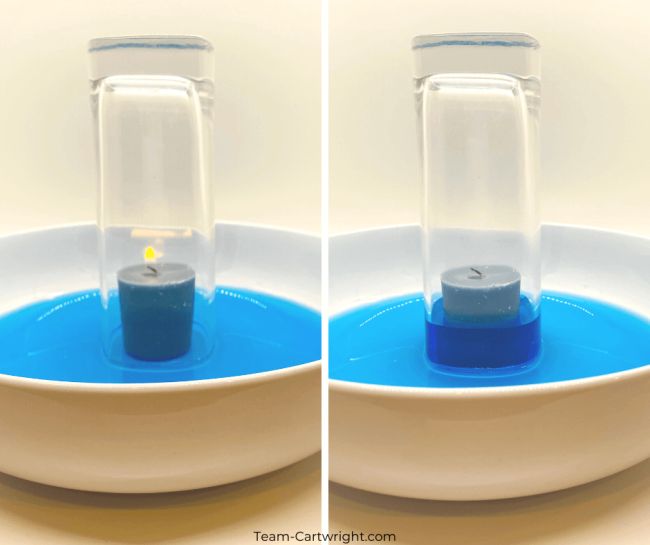
30. Watch the water rise
Learn about Charles’s law with this simple experiment. As the candle burns, using up oxygen and heating the air in the glass, the water rises as if by magic.
Learn more: Rising Water Experiment

31. Learn about capillary action
Kids will be amazed as they watch the colored water move from glass to glass, and you’ll love the easy and inexpensive setup. Gather some water, paper towels, and food coloring to teach the scientific magic of capillary action.
Learn more: Capillary Action
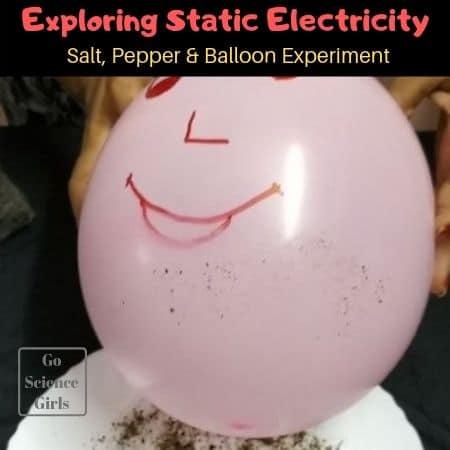
32. Give a balloon a beard
Equally educational and fun, this experiment will teach kids about static electricity using everyday materials. Kids will get a kick out of creating beards on their balloon people!
Learn more: Static Electricity

33. Find your way with a DIY compass
Here’s an old classic that never fails to impress. Magnetize a needle, float it on the water’s surface, and it will always point north.
Learn more: How To Make a Compass
34. Crush a can using air pressure
Sure, it’s easy to crush a soda can with your bare hands, but what if you could do it without touching it at all? That’s the power of air pressure!

35. Tell time using the sun
While people use clocks or even phones to tell time today, there was a time when a sundial was the best means to do that. Kids can create their own sundials using everyday materials like cardboard and pencils.
Learn more: Make Your Own Sundial
36. Launch a bottle rocket
Grab a cork, plastic bottle, cardboard, duct tape, and bike pump to learn about the laws of motion.
Learn more: Bottle Rocket (Guide + Printable Reflection Sheet)
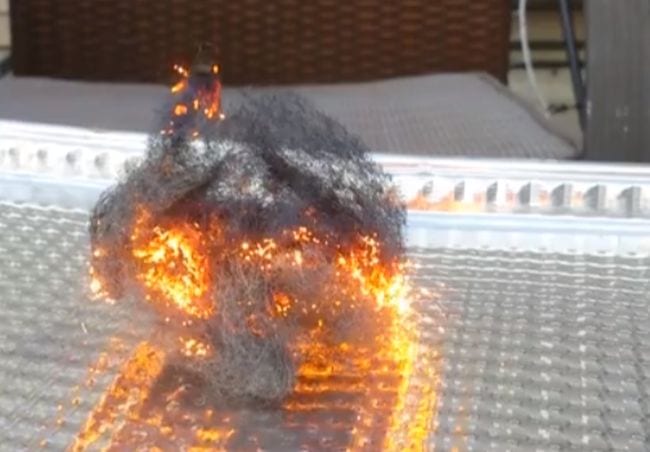
37. Make sparks with steel wool
All you need is steel wool and a 9-volt battery to perform this science demo that’s bound to make their eyes light up! Kids learn about chain reactions, chemical changes, and more.
Learn more: Steel Wool Electricity
38. Levitate a Ping-Pong ball
This experiment is really all about Bernoulli’s principle. You only need plastic bottles, bendy straws, and Ping-Pong balls to make the science magic happen.

39. Whip up a tornado in a bottle
There are plenty of versions of this classic experiment out there, but we love this one because it sparkles. Kids learn about a vortex and what it takes to create one.
Learn more: Tornado in a Bottle
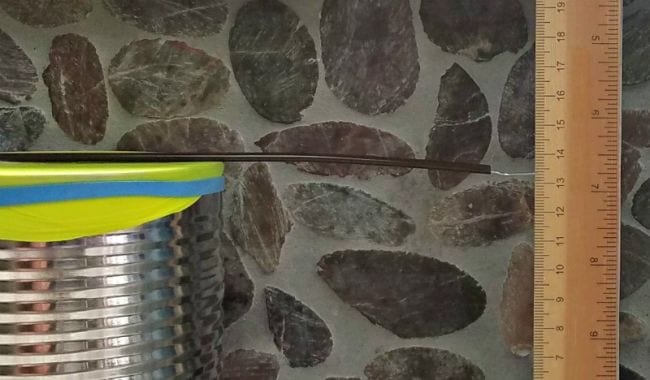
40. Monitor air pressure with a DIY barometer
This simple but effective DIY science project teaches kids about air pressure and meteorology. They’ll have fun tracking and predicting the weather with their very own barometer.
Learn more: How To Make a Barometer
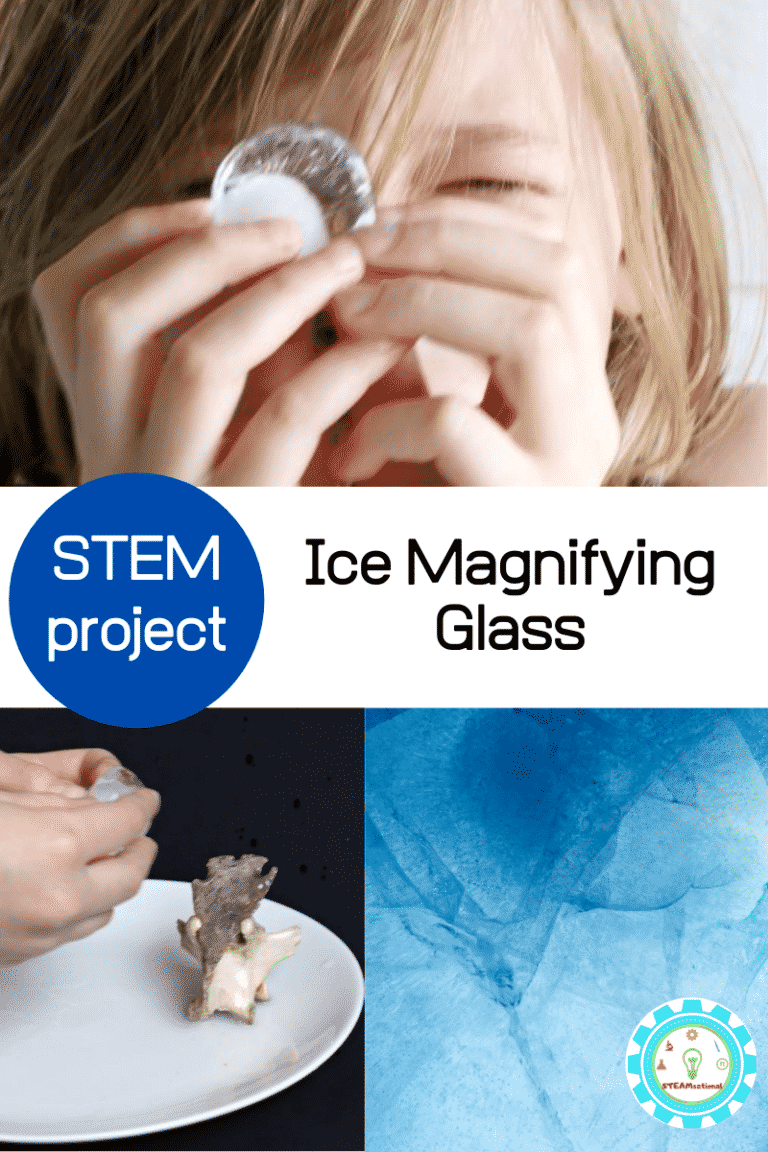
41. Peer through an ice magnifying glass
Students will certainly get a thrill out of seeing how an everyday object like a piece of ice can be used as a magnifying glass. Be sure to use purified or distilled water since tap water will have impurities in it that will cause distortion.
Learn more: Ice Magnifying Glass

42. String up some sticky ice
Can you lift an ice cube using just a piece of string? This quick experiment teaches you how. Use a little salt to melt the ice and then refreeze the ice with the string attached.
Learn more: Sticky Ice

43. “Flip” a drawing with water
Light refraction causes some really cool effects, and there are multiple easy science experiments you can do with it. This one uses refraction to “flip” a drawing; you can also try the famous “disappearing penny” trick .
Learn more: Light Refraction With Water
44. Color some flowers
We love how simple this project is to re-create since all you’ll need are some white carnations, food coloring, glasses, and water. The end result is just so beautiful!
45. Use glitter to fight germs
Everyone knows that glitter is just like germs—it gets everywhere and is so hard to get rid of! Use that to your advantage and show kids how soap fights glitter and germs.
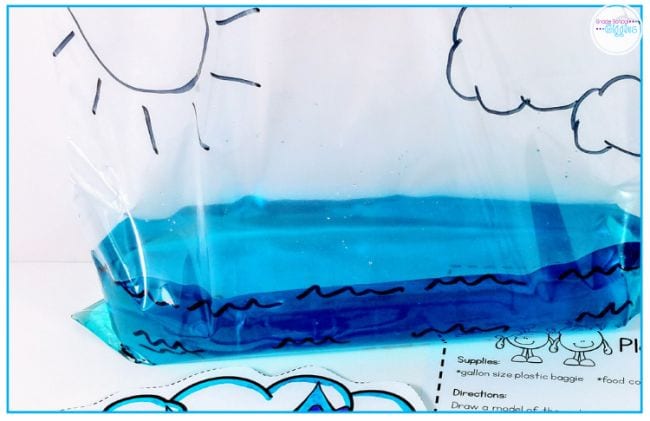
46. Re-create the water cycle in a bag
You can do so many easy science experiments with a simple zip-top bag. Fill one partway with water and set it on a sunny windowsill to see how the water evaporates up and eventually “rains” down.
Learn more: Water Cycle in a Bag and Water Cycle Lesson Slides and Video
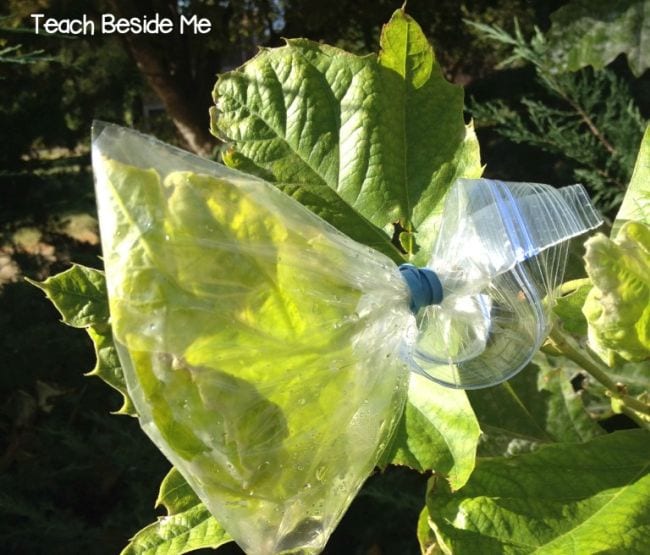
47. Learn about plant transpiration
Your backyard is a terrific place for easy science experiments. Grab a plastic bag and rubber band to learn how plants get rid of excess water they don’t need, a process known as transpiration.
Learn more: Plant Transpiration

48. Clean up an oil spill
Before conducting this experiment, teach your students about engineers who solve environmental problems like oil spills. Then, have your students use provided materials to clean the oil spill from their oceans.
Learn more: Oil Spill

49. Construct a pair of model lungs
Kids get a better understanding of the respiratory system when they build model lungs using a plastic water bottle and some balloons. You can modify the experiment to demonstrate the effects of smoking too.
Learn more: Lung Science Experiment
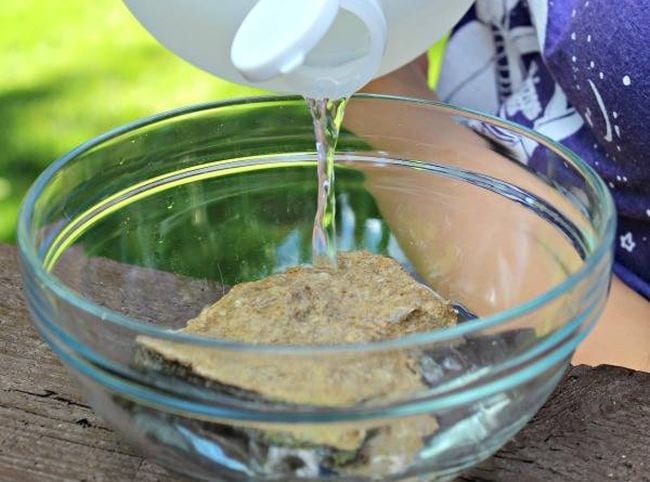
50. Experiment with limestone rocks
Kids love to collect rocks, and there are plenty of easy science experiments you can do with them. In this one, pour vinegar over a rock to see if it bubbles. If it does, you’ve found limestone!
Learn more: Limestone Experiments
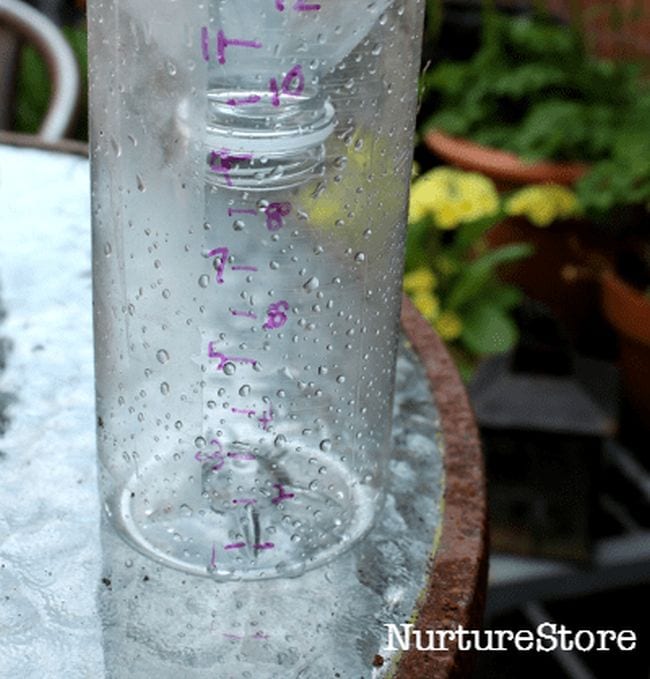
51. Turn a bottle into a rain gauge
All you need is a plastic bottle, a ruler, and a permanent marker to make your own rain gauge. Monitor your measurements and see how they stack up against meteorology reports in your area.
Learn more: How To Make a Rain Gauge
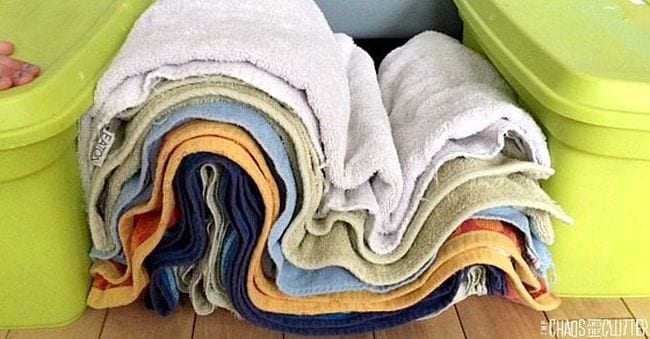
52. Build up towel mountains
This clever demonstration helps kids understand how some landforms are created. Use layers of towels to represent rock layers and boxes for continents. Then pu-u-u-sh and see what happens!
Learn more: Towel Mountains
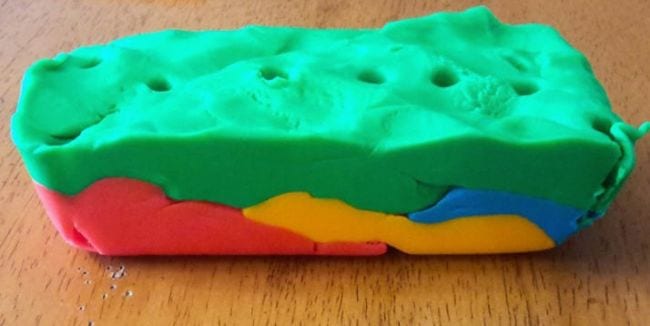
53. Take a play dough core sample
Learn about the layers of the earth by building them out of play dough, then take a core sample with a straw. ( Love Play-Doh? Get more learning ideas here. )
Learn more: Play Dough Core Sampling

54. Project the stars on your ceiling
Use the video lesson in the link below to learn why stars are only visible at night. Then create a DIY star projector to explore the concept hands-on.
Learn more: DIY Star Projector
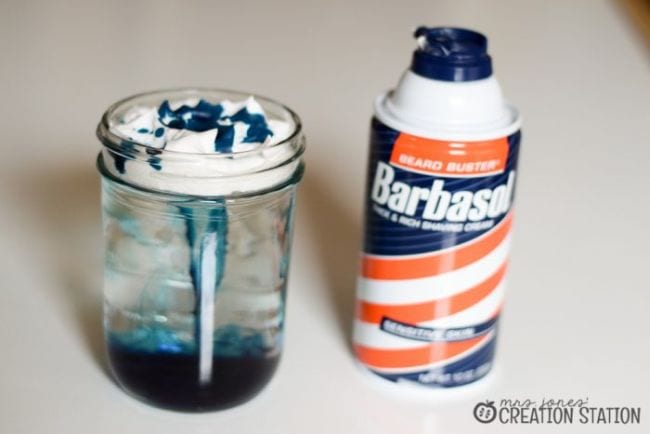
55. Make it rain
Use shaving cream and food coloring to simulate clouds and rain. This is an easy science experiment little ones will beg to do over and over.
Learn more: Shaving Cream Rain
56. Blow up your fingerprint
This is such a cool (and easy!) way to look at fingerprint patterns. Inflate a balloon a bit, use some ink to put a fingerprint on it, then blow it up big to see your fingerprint in detail.
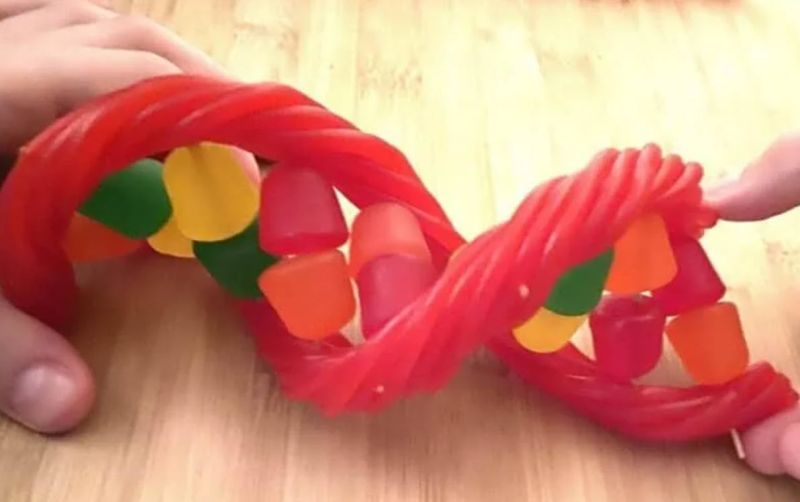
57. Snack on a DNA model
Twizzlers, gumdrops, and a few toothpicks are all you need to make this super-fun (and yummy!) DNA model.
Learn more: Edible DNA Model
58. Dissect a flower
Take a nature walk and find a flower or two. Then bring them home and take them apart to discover all the different parts of flowers.

59. Craft smartphone speakers
No Bluetooth speaker? No problem! Put together your own from paper cups and toilet paper tubes.
Learn more: Smartphone Speakers

60. Race a balloon-powered car
Kids will be amazed when they learn they can put together this awesome racer using cardboard and bottle-cap wheels. The balloon-powered “engine” is so much fun too.
Learn more: Balloon-Powered Car

61. Build a Ferris wheel
You’ve probably ridden on a Ferris wheel, but can you build one? Stock up on wood craft sticks and find out! Play around with different designs to see which one works best.
Learn more: Craft Stick Ferris Wheel
62. Design a phone stand
There are lots of ways to craft a DIY phone stand, which makes this a perfect creative-thinking STEM challenge.
63. Conduct an egg drop
Put all their engineering skills to the test with an egg drop! Challenge kids to build a container from stuff they find around the house that will protect an egg from a long fall (this is especially fun to do from upper-story windows).
Learn more: Egg Drop Challenge Ideas
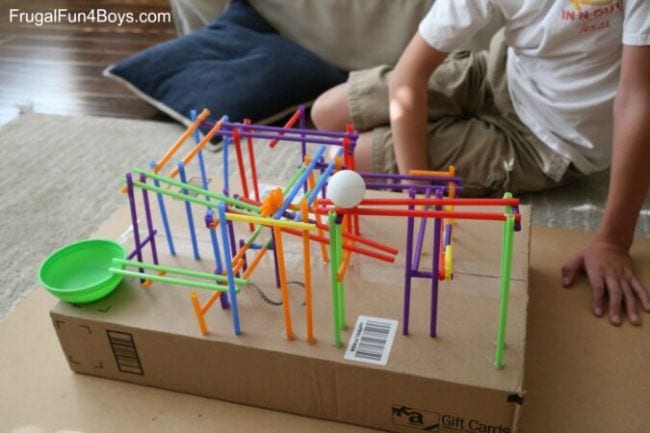
64. Engineer a drinking-straw roller coaster
STEM challenges are always a hit with kids. We love this one, which only requires basic supplies like drinking straws.
Learn more: Straw Roller Coaster
65. Build a solar oven
Explore the power of the sun when you build your own solar ovens and use them to cook some yummy treats. This experiment takes a little more time and effort, but the results are always impressive. The link below has complete instructions.
Learn more: Solar Oven (Guide + Printable Reflection Sheet)

66. Build a Da Vinci bridge
There are plenty of bridge-building experiments out there, but this one is unique. It’s inspired by Leonardo da Vinci’s 500-year-old self-supporting wooden bridge. Learn how to build it at the link, and expand your learning by exploring more about Da Vinci himself.
Learn more: Da Vinci Bridge
67. Step through an index card
This is one easy science experiment that never fails to astonish. With carefully placed scissor cuts on an index card, you can make a loop large enough to fit a (small) human body through! Kids will be wowed as they learn about surface area.
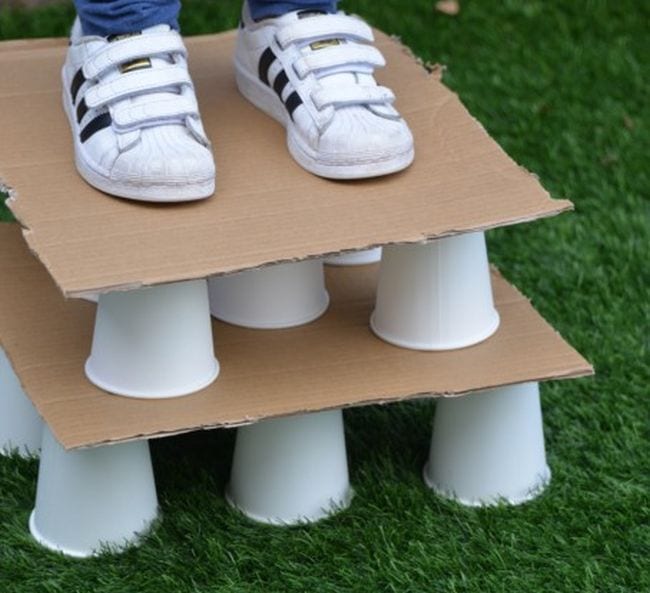
68. Stand on a pile of paper cups
Combine physics and engineering and challenge kids to create a paper cup structure that can support their weight. This is a cool project for aspiring architects.
Learn more: Paper Cup Stack
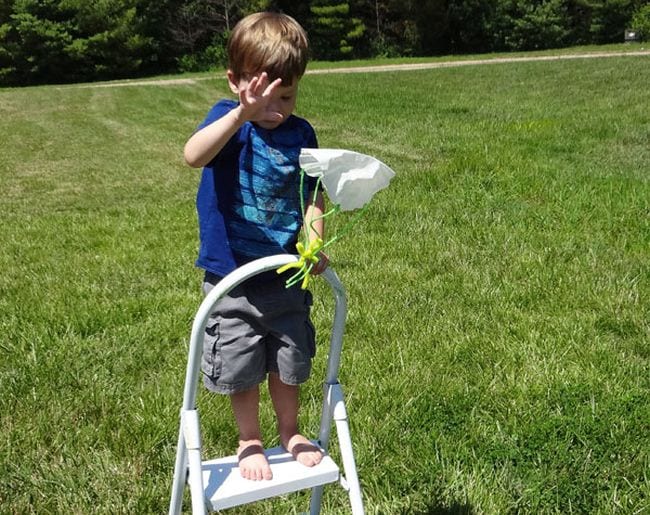
69. Test out parachutes
Gather a variety of materials (try tissues, handkerchiefs, plastic bags, etc.) and see which ones make the best parachutes. You can also find out how they’re affected by windy days or find out which ones work in the rain.
Learn more: How To Make a Parachute
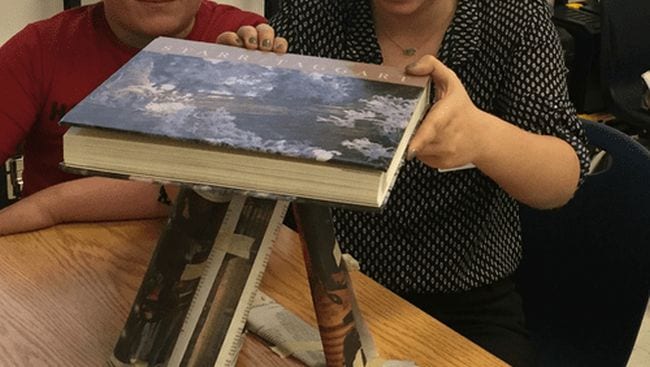
70. Recycle newspapers into an engineering challenge
It’s amazing how a stack of newspapers can spark such creative engineering. Challenge kids to build a tower, support a book, or even build a chair using only newspaper and tape!
Learn more: Newspaper STEM Challenge

71. Use rubber bands to sound out acoustics
Explore the ways that sound waves are affected by what’s around them using a simple rubber-band “guitar.” (Kids absolutely love playing with these!)
Learn more: Sound Experiment
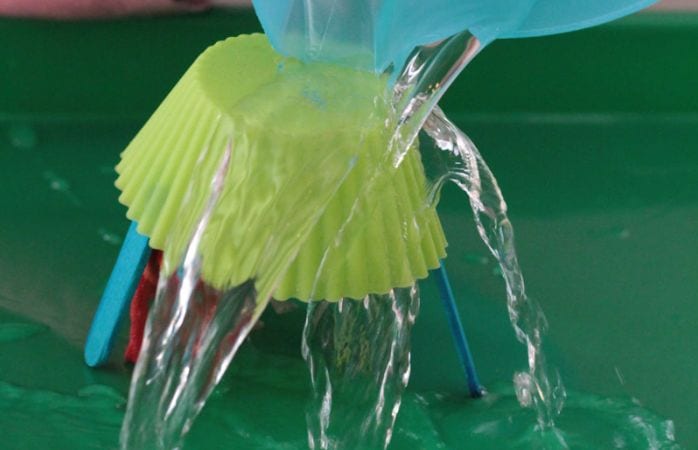
72. Assemble a better umbrella
Challenge students to engineer the best possible umbrella from various household supplies. Encourage them to plan, draw blueprints, and test their creations using the scientific method.
Learn more: Umbrella STEM Challenge
73. Grow rock candy
Turn science into a sweet treat by making rock candy. Dissolve sugar in hot water to create a solution, then let it cool as crystals slowly form on a stick or string. The best part is that the kids get to eat their experiment when it’s done!
74. Create a rain cloud in a jar
Bring weather science indoors with this fun hands-on project. Use shaving cream to mimic clouds and add drops of food coloring to simulate rain. It’s a great way to explore the water cycle without even having to step outside!
75. Brighten up with rainbow celery
Make your science lesson more vibrant with a splash of color. Drop celery stalks into glasses of water with food dye, and watch as the beautiful colors travel up through the stems.
76. Safely view a solar eclipse
Teach your students about the solar eclipse, and help them safely view this exciting event with just a few simple materials.
Learn more: Solar Eclipse Viewer (Guide + Printable Reflection Sheet)
Get your free printable science experiment recording sheet!
Just fill out the form on this page to get instant access to your free printable experiment recording sheet.

Plus, visit our science hub for everything science for grades K-12!
Sign up for our newsletters to get all the latest learning ideas straight to your inbox..
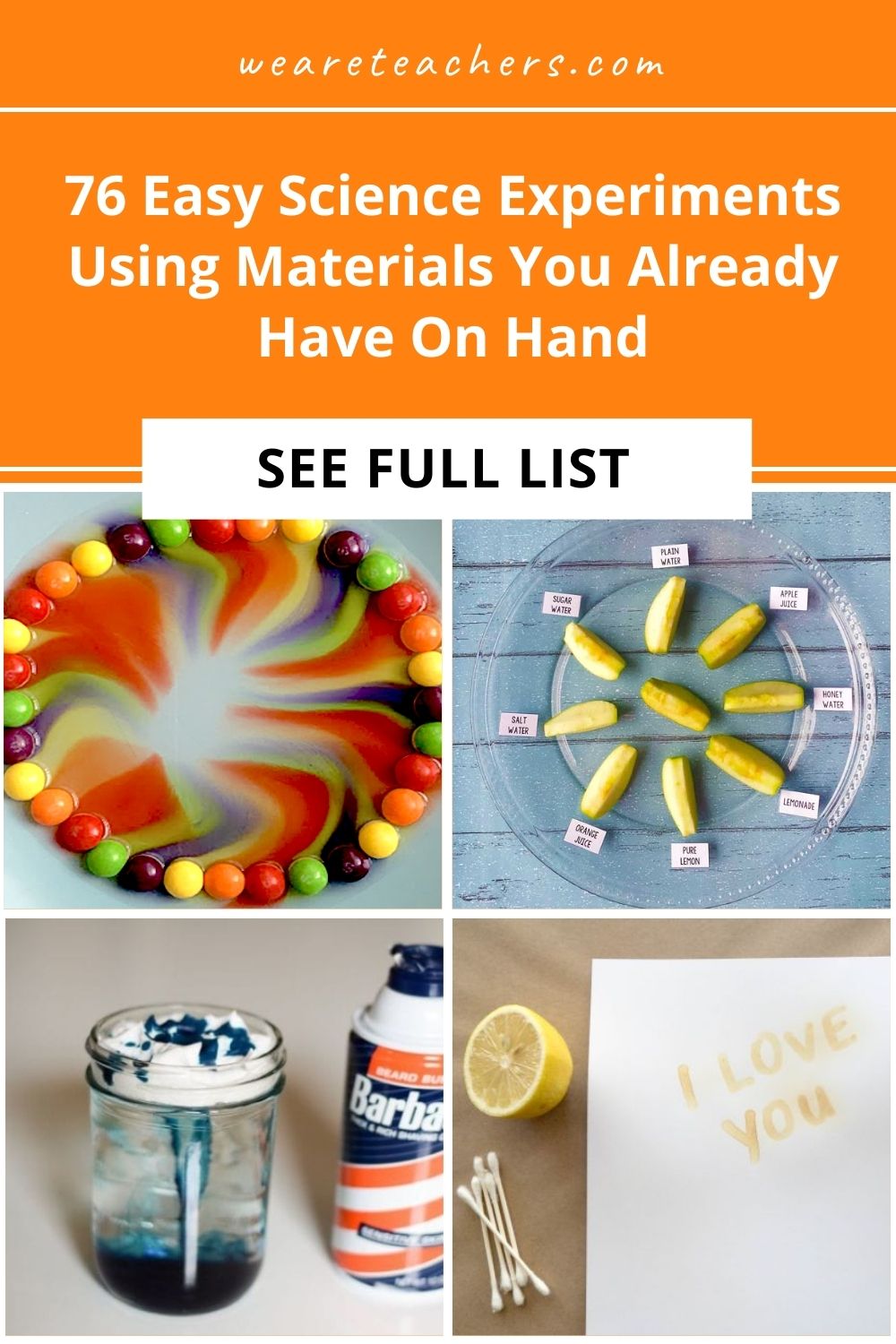
You Might Also Like
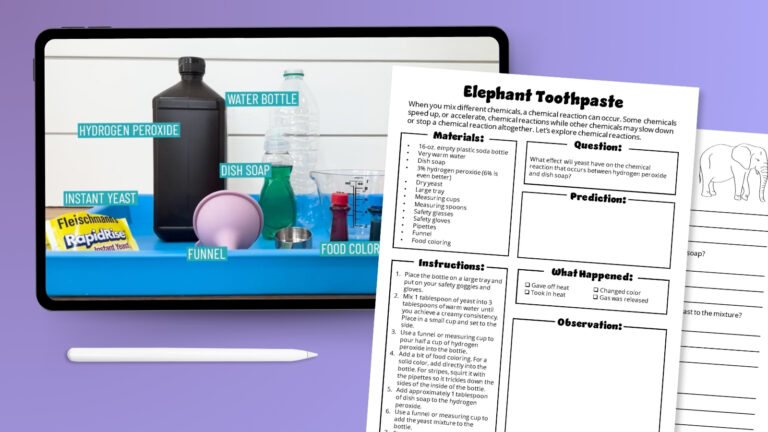
Elephant Toothpaste Experiment: How-To Plus Free Worksheet
Heat things up with this larger-than-life science lesson. Continue Reading
Copyright © 2024. All rights reserved. 5335 Gate Parkway, Jacksonville, FL 32256
- Skip to primary navigation
- Skip to main content
- Skip to primary sidebar

- FREE Experiments
- Kitchen Science
- Climate Change
- Egg Experiments
- Fairy Tale Science
- Edible Science
- Human Health
- Inspirational Women
- Forces and Motion
- Science Fair Projects
- STEM Challenges
- Science Sparks Books
- Contact Science Sparks
- Science Resources for Home and School
Easy FIVE MINUTE Science Experiments
January 8, 2024 By Emma Vanstone Leave a Comment
These easy five-minute science experiments are great when you need a quick science activity or demonstration but don’t have a long time to prepare or run an investigation.
Each q uick and easy science experiment uses materials you probably already have and are quick and easy to prepare, carry out and clear up afterwards.
Ten quick and easy science experiments
Test reaction time.
All you need to test your reaction time is a ruler and a willing helper. This activity takes less than five minutes, even if you do it a few times! If you don’t have a ruler, print my reaction time template and use that!

Make an Optical Illusion
A basic optical illusion is easy to create using paper, pens and a straw or pencil. I also have a handy template you can use to make it even speedier.

Refraction reversing experiment
Use a simple glass of water to reverse writing or a drawing. This activity is simple but very impressive and can be themed in many different ways. My favourite is our Alice’s Adventures in Wonderland reversing signs .

Is your arm span the same as your height?
Find out if your arm span is the same as your height with a simple investigation. The best thing about this activity is it needs zero resources!!
Another similar idea is to work out how many of your own feet tall you are .

Straw Rockets
These simple straw rockets take just a few minutes to build and test and can be used over and over again.

Paper spinners
If you haven’t made a paper spinner , you’re missing out! Spinners are very easy to make. You only need paper, scissors and a paperclip, and they always work!
We like to experiment with big and small spinners to find out which falls the fastest.

Inertia ball drop demonstration
A simple inertia demonstration using a glass and a lemon takes just minutes to set up and always gets a big thumbs up from an audience.
Just pull the yellow card quickly to the side and watch as the lemon drops into the glass!
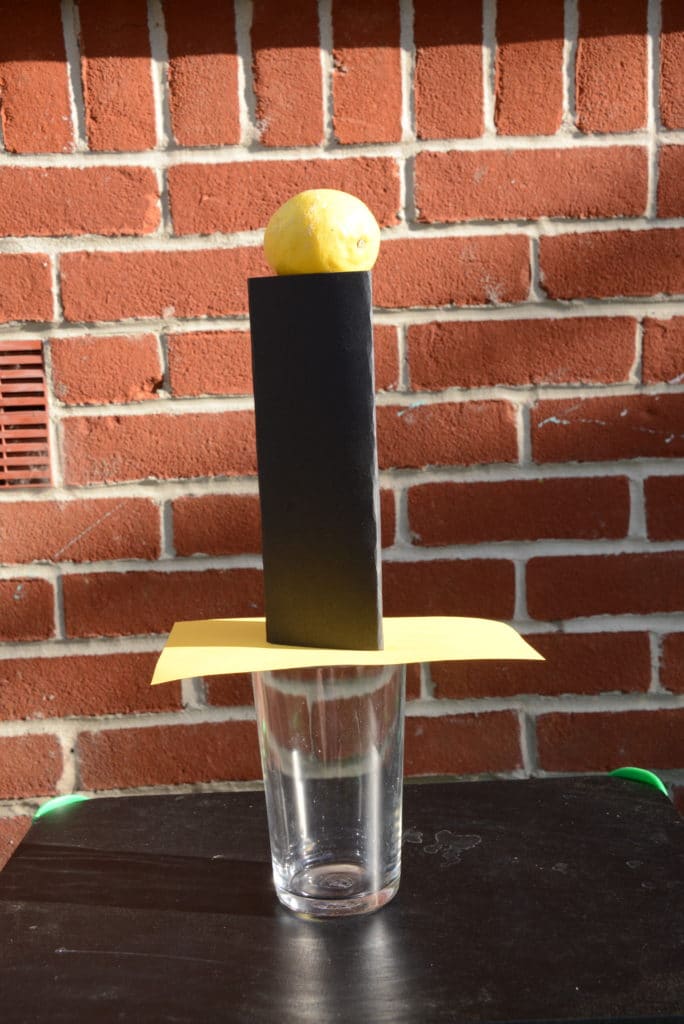
Unbreakable egg experiment
Find out how to make an unbreakable egg . This almost always works, but be ready for some mess, just in case.

Make a rainbow
Did you know you can make a rainbow even on a cloudy day? You will need a prism for this, but these are inexpensive to buy.
If the sun is shining, you can use a hosepipe to see a rainbow. Stand with your back to the sun and spray the hosepipe into the air. A rainbow should form in the water droplets.

Density Jar
A simple density jar is easy to create and uses just oil and water. Kids love to find different objects to float on each layer, and if you have more time, you can create a density column with more layers.

DIY Phone Speaker
Learn about sounds and how they are amplified with a simple DIY mobile phone speaker .

If you can think of any more five minute science experiments , let me know!

Last Updated on January 8, 2024 by Emma Vanstone
Safety Notice
Science Sparks ( Wild Sparks Enterprises Ltd ) are not liable for the actions of activity of any person who uses the information in this resource or in any of the suggested further resources. Science Sparks assume no liability with regard to injuries or damage to property that may occur as a result of using the information and carrying out the practical activities contained in this resource or in any of the suggested further resources.
These activities are designed to be carried out by children working with a parent, guardian or other appropriate adult. The adult involved is fully responsible for ensuring that the activities are carried out safely.
Reader Interactions
Leave a reply cancel reply.
Your email address will not be published. Required fields are marked *
Get Your ALL ACCESS Shop Pass here →

20 Fun and Easy 5-Minute Science Experiments for Kids
Let’s go for the instant wow with fantastic, mind-blowing experiments! These 5 minute science experiments are a fantastic way to introduce science concepts to kids of all ages. Each activity is easy to set up with everyday materials and perfect for a quick mini-lesson!

5 Minute Easy Science Experiments
Below, you’ll find 20 fun, 5 minute science experiments ideal for grades K-5 . They’re simple enough for younger kids but can be adapted for older kids, making them great for mixed-age groups. Plus, I’ve added tips to make science with kids even easier! These might seem like magic tricks, but plenty of fantastic science is involved.
💡 For younger kids (kindergarten to 2nd grade) , the focus should be on making the activities simple, fun, and visually engaging while introducing basic scientific concepts in easy-to-understand terms.
💡 For older kids (3rd to 5th grade) , you can add science vocabulary surrounding the explored concept, such as surface tension, reaction rates, density, and solubility. Each of the experiments below will further explain the science behind the experiment.
1. Magic Milk Experiment
Grade Level : K-5 Pour whole milk into a shallow dish and add a few drops of food coloring near the center. Dip a cotton swab in dish soap and touch it to the milk’s surface. Watch as the colors swirl and dance around! This experiment introduces the concept of surface tension and the role of fat molecules in milk.
2. Balloon and Static Electricity
Grade Level : K-3 Rub a balloon or wool on your hair, then use the static charge to move small paper pieces or bend a stream of water. It’s a simple way to introduce static electricity and how charges interact.
3. Dancing Raisins
Grade Level : K-3 Drop raisins into a glass of soda and watch them “dance” as carbon dioxide bubbles lift them to the surface. This fun experiment introduces buoyancy and gas behavior.
4. Baking Soda and Vinegar Reaction
Grade Level : K-5 Mix baking soda and vinegar for an instant fizzing reaction! It’s a great introduction to chemical reactions between acids and bases; kids love the bubbly effect.
5. Paper Towel Chromatography
Grade Level : 2-5 Draw circles with washable markers near the bottom of a paper towel, dip the edge in water, and watch as the colors separate. It’s an easy way to explore how different molecules move through a material.
6. Skittles Rainbow
Grade Level : K-3 Arrange Skittles in a circle on a plate and pour warm water in the middle. Watch as the colors dissolve into a beautiful rainbow. This is a simple way to show how solubility works.
7. Lava Lamp Experiment
Grade Level : 3-5 Mix oil, water, food coloring, and an effervescent tablet in a glass to create a bubbling lava lamp effect. This experiment introduces the concept of immiscible liquids and gas formation.
8. Invisible Ink
Grade Level : 3-5 Write secret messages with lemon juice, then reveal them by holding the paper near a light bulb. This fun activity introduces how heat can cause chemical changes.
9. Soap-Powered Boat
Grade Level : K-3 Cut a small boat shape from cardstock, place it on water, and add a drop of dish soap. Watch it zoom across the surface as soap reduces the water’s surface tension.
10. Pepper and Water Trick
Grade Level : K-5 Sprinkle pepper on water, then dip a soap-covered finger into it. The pepper scatters as the soap breaks the surface tension. This is a fun way to show how molecules behave in water.

11. Blowing Up a Balloon with Baking Soda and Vinegar
Grade Level : K-5 Using a bottle, baking soda, vinegar, and a balloon, show how the chemical reaction creates gas that fills the balloon. This is an easy and exciting way to visualize gas production during a reaction.
12. Screaming Balloon
Grade Level: 2-5 Make a balloon scream! Blow up a balloon and place a hex nut inside, then spin the balloon in a circular motion. The nut makes a “screaming” noise as it vibrates inside the balloon, introducing kids to sound waves and vibration. This experiment is a quick and fun way to explore how sound is created by movement and interaction with objects.
13. Penny Drop Water Experiment
Grade Level : 2-5 Using a penny, a dropper, and water, see how many drops of water can fit on a penny before spilling over. This simple experiment demonstrates surface tension and cohesion.
14. Rubber Band Sound Experiment
Grade Level : K-3 Stretch rubber bands around an empty tissue box and pluck them to make different sounds. Discuss how the tension of the bands affects the pitch, introducing the basics of sound waves.
15. Cloud in a Jar
Grade Level : 3-5 Fill a jar with hot water, then spray hairspray inside and cover it with ice cubes. Watch as a cloud forms inside the jar. This activity introduces kids to the concept of condensation and how clouds form.
16. Toothpick Star Experiment
Grade Level : 1-5 Bend toothpicks and arrange them into a star shape. Add a few drops of water to the center, and watch the star “magically” open! For younger kids, focus on the fun shape change, and for older students, explain how the water moves through the toothpicks by surface tension , making the star expand.
17. Density Jar Column
Grade Level: 3-5 Pour layers of different liquids, such as honey, dish soap, water, oil, and rubbing alcohol, into a clear glass, being careful not to mix them. Watch as each liquid forms a distinct layer based on its density. Kids can then drop small objects, like beads, into the column to see which layers they float or sink in.
18. Egg in a Bottle
Grade Level: 3-5 This classic experiment demonstrates air pressure and how temperature changes can create a vacuum effect, drawing the egg into the bottle.
19. Homemade Slime
Grade Level: K-5 This hands-on experiment demonstrates how chemical bonds form when ingredients react to create a stretchy, non-Newtonian substance. Kids can explore how adding more or less saline solution affects the slime’s texture, providing a fun introduction to polymers and chemical reactions
20: Water Refraction Experiment
Grade Level: K-5 This simple experiment introduces kids to the concept of refraction—how light bends as it passes through water. For older students, you can discuss how light changes speed when it moves from one medium (air) to another (water), creating the illusion of a reversed image.

Tips for Doing Science with Kids:
💡 Want to Do More than 5 Minutes? Add in the scientific method , choose variables , and create a hypothesis .
Printable Science Projects For Kids
If you’re looking to grab all of our printable science projects in one convenient place plus exclusive worksheets and bonuses like a STEAM Project pack, our Science Project Pack is what you need! Over 300+ Pages!
- Bonus Quick Grab Packs for Biology, Earth Science, Chemistry, and Physics
- 90+ classic science activities with journal pages, supply lists, set up and process, and science information. NEW! Activity-specific observation pages!
- Best science practices posters and our original science method process folders for extra alternatives!
- Be a Collector activities pack introduces kids to the world of making collections through the eyes of a scientist. What will they collect first?
- Know the Words Science vocabulary pack includes flashcards, crosswords, and word searches that illuminate keywords in the experiments!
- My science journal writing prompts explore what it means to be a scientist!
- Bonus STEAM Project Pack: Art meets science with doable projects!

Subscribe to receive a free 5-Day STEM Challenge Guide
~ projects to try now ~.

Cool Science Experiments Headquarters
Making Science Fun, Easy to Teach and Exciting to Learn!
Science Experiments
35 Easy Science Experiments You Can Do Today!
Looking for easy science experiments to do at home or in the classroom? You’re in luck because we’ve got over 35 easy science activities for kids that will help you make science fun for all ages.
Most of these simple science experiments for kids are easy to prepare, quick to perform, and use household items or inexpensive materials you can find almost anywhere. To connect the fun to the “why it works” you’ll find an easy to teach explanation with every experiment!
Musical Jars Science Experiment

This super easy experiment is simple as it is fun! Kids make their own musical instruments with clear jars and water then investigate sound waves, pitch, and more.
When the experiment is complete, use the colorful new “instrument” for a fun music lesson. Kids can play and take turns to “name that tune”!
Detailed Instructions & Video Tutorial -> Musical Jars Science Experiment
Viscosity of Liquids Science Experiment

Viscosity may be a confusing term for kids at first, but this super easy experiment can help them see viscosity in action!
With marbles, clear jars, and a few household materials, kids will make predictions, record data, and compare the results while they test high and low density liquids.
Detailed Instructions & Video Tutorial -> Viscosity Science Experiment
Floating Egg Science Experiment
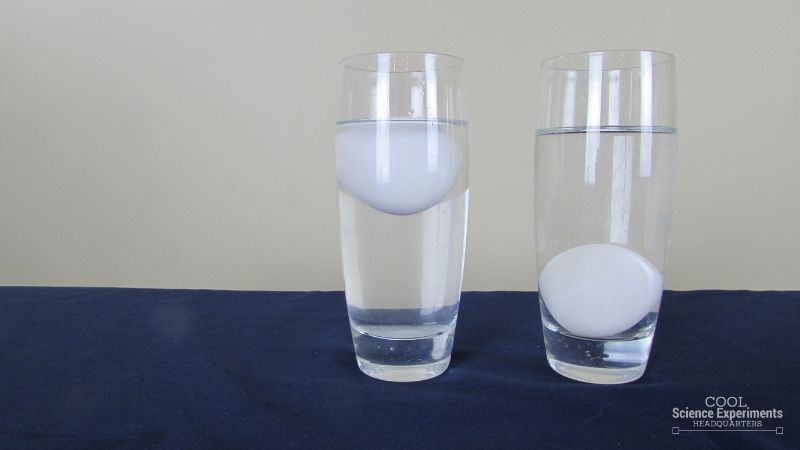
Can a solid egg float? Kids can find the answer and understand why with this quick science experiment.
Discover just how easy it can be to make a raw egg float while testing the laws of density. We’ve included additional ideas to try so kids can make predictions and test the concept further.
Detailed Instructions & Video Tutorial -> Floating Egg Science Experiment
Paper Towel Dry Under Water Experiment

Is it possible to keep a paper towel dry even when submerging it under water? The answer is a surprising “yes,” if you use science to help!
Start with the properties of your materials, make a prediction, then explore matter, density, volume, and more.
Detailed Instructions & Video Tutorial -> Paper Towel Dry Under Water Experiment
Mixing Oil & Water Science Experiment

This simple experiment for kids helps them better understand density and the changes that happen when adding an emulsifier to the mix.
Detailed Instructions & Video Tutorial -> Mixing Oil & Water Experiment
Will it Float or Sink Science Experiment
Will it sink or will it float? This fun experiment challenges what students think they know about household items!
Students record their hypothesis for each item then test it to compare what they think will happen against their observations.
Detailed Instructions & Video Tutorial -> Float or Sink Science Experiment
Water Temperature Science Experiment

What does thermal energy look like? In this easy science experiment, kids are able to see thermal energy as they explore the concept in action.
With clear jars and food coloring, students can quickly see how molecules move differently through hot and cold water.
Detailed Instructions & Video Tutorial -> Water Temperature Science Experiment
Balloon Blow-up Science Experiment

Kids will discover how matter reacts when heated and cooled as they watch with surprise as baking soda and vinegar blow the balloon up before their eyes.
Detailed Instructions & Video Tutorial -> Balloon Blow-up Science Experiment
Floating Ping Pong Ball Science Experiment

Kids will giggle with joy with this super easy experiment. With only a ping pong ball and a hair dryer, students will have a great time while exploring Bernoulli’s Principle in action.
We’ve included additional ideas to further explore the concept with different objects and observe the change in results.
Detailed Instructions & Video Tutorial -> Floating Ping Pong Ball Science Experiment
Hair Stand on End Science Experiment

It’s especially fun for those who’ve never seen static electricity in action before!
Detailed Instructions & Video Tutorial -> Hair Stand on End Science Experiment
Oil Bubbles in Water Science Experiment

Kids explore density and experience some chemistry when creating oil bubbles in water with everyday household items.
This experiment is particularly fun when kids see that they’ve made what looks like a lava lamp!
Detailed Instructions & Video Tutorial -> Oil Bubbles in Water Science Experiment
Color Changing Water Science Experiment

Kids will be surprised as they watch a new color being “created” without mixing! Using only a clear bowl and glass, some food coloring, and water, this super easy science experiment is quick and easy with a huge wow factor.
Try it with yellow and blue to follow along with our demonstration video then try different primary color combinations and explore the results.
Detailed Instructions & Video Tutorial -> Color Changing Water Science Experiment
Magnetic Paper Clip Chain Science Experiment

It may seem a bit like magic but it’s actually science! It’s not hard to capture your kids’ attention with this quick and easy science experiment as they watch paper clips “stick” together and form a chain!
Perfect for younger children, the experiment only takes a few minutes and is a fun way to explore the concept of magnetic transference.
Detailed Instructions & Video Tutorial -> Magnetic Paper Clip Chain Science Experiment
Is it Magnetic Science Experiment
With only a magnet and a few household items, kids will make and record their predictions, test and observe, then compare what they think is magnetic against the results.
Simple and quick, but some of the results may surprise your students!
Cloud in a Jar Experiment

This simple experiment only requires a few materials but really holds student attention as a cloud forms before their eyes!
Kids will learn new weather vocabulary as they explore how physical changes and reactions happen as clouds begin to take form. We’ve also included a helpful chart on the types of clouds.
Detailed Instructions & Video Tutorial -> Cloud in a Jar Science Experiment
Magic Milk Science Experiment

Create a dancing rainbow of colors with this easy science experiment for kids!
Using only a few ordinary kitchen items, your students can create a color explosion in ordinary milk when they add our special ingredient. (Hint: The special ingredient (soap!) includes hydrophilic and hydrophobic molecules that make the magic happen!)
Detailed Instructions & Video Tutorial -> Magic Milk Science Experiment
Walking Water Science Experiment

Water can’t really walk upwards against gravity, but this cool science experiment makes it seem like it can!
Kids are able to see the capillary action process and learn how attraction and adhesive forces in action allow water to move out of one glass into another.
Detailed Instructions & Video Tutorial -> Walking Water Science Experiment
Light Refraction Science Experiment

The results of this easy science experiment are so amazing, it makes kids (and adults) think it must be magic!
Young scientists watch in surprise while they see an arrow change directions instantly. Investigating refraction couldn’t be more fun!
Detailed Instructions & Video Tutorial -> Light Refraction Science Experiment
Dancing Raisins Experiment

Learn about the reactions of buoyancy and density in this simple science activity for kids.
They may not need dancing shoes, but give them a glass of soda pop and the raisins in this fun experiment love to dance!
Detailed Instructions & Video Tutorial -> Dancing Raisins Science Experiment
See Sound Experiment

Kids love this experiment because they are encouraged to drum loudly so they can “see” sound waves in action!
Detailed Instructions & Video Tutorial -> See Sound Science Experiment
Elephant Toothpaste Science Experiment

Grab some giant brushes and get ready to make elephant toothpaste! Although you might not be able to get an elephant excited by this super easy experiment, kids love it!
The impressive and quick results created by the chemical reaction and the heat released in the process makes an abundant amount of fun and colorful foam!
Detailed Instructions & Video Tutorial -> Elephant Toothpaste Science Experiment
Upside Down Glass of Water Science Experiment

We all know what happens when we turn a glass of water upside down, but what if I told you you can do it without the water spilling out?
The experiment only requires a few common items and you’ll be amazed by the results of air pressure in action!
Detailed Instructions & Video Tutorial -> Upside Down Glass of Water Science Experiment
Pick up Ball with a Jar Science Experiment

It almost seems like magic but with the help of science, you can pick up a ball with an open jar!
Instead of magic, this easy science activity uses centripetal force and practice to do what seems like the impossible.
Detailed Instructions & Video Tutorial -> Pick up Ball with a Jar Experiment
Will It Melt Science Experiment
Can you guess which items will melt? This easy outside experiment challenges what students think they know about the effects of the sun.
Pepper Move Science Experiment

Can you make pepper move and zoom away with just a light touch of your finger? With science you can!
This experiment only takes a few quick minutes from beginning to end, but the reaction caused by surface tension makes kids want to do it over and over.
Detailed Instructions & Video Tutorial -> Pepper Move Science Experiment
Crush a Plastic Bottle Science Experiment

Go for it, crush that bottle, but don’t touch it! Although it usually can’t be seen or touched, air pressure is pushing against all surfaces at all times.
With this easy science activity kids can see air pressure at work when they watch a bottle crushes itself!
Detailed Instructions & Video Tutorial -> Crush a Plastic Bottle Science Experiment
Egg in Vinegar Science Experiment

This vinegar science experiment will have your eggs and kids bouncing (with excitement!) before you know it!
Kids can watch and explore the results of chemical reactions as the egg changes from something that seems solid into what feels like something bouncy!
Detailed Instructions & Video Tutorial -> Egg in Vinegar Science Experiment
Straw Through a Potato Science Experiment

Can you make a normal plastic straw go into a raw, solid potato? It seems like something impossible, but science can easily make it possible!
Pick your potatoes then let kids try their strength as they explore air pressure with this super easy experiment.
Detailed Instructions & Video Tutorial -> Straw Through a Potato Science Experiment
Rainbow in a Jar Science Experiment

With only a few household items, they’ll explore mass, volume, and density with every color layer!
Detailed Instructions & Video Tutorial -> Rainbow in a Jar Experiment
Tornado in a Bottle Science Experiment

Kids can have fun while learning more about centripetal force with this fun experiment.
With a little muscle and science, kids watch with amazement as they create their own glitter cyclone in a bottle as the centripetal force vortex appears.
Detailed Instructions & Video Tutorial -> Tornado in a Bottle Science Experiment
Why Doesn’t the Water Leak Science Experiment

Can you poke holes in a plastic bag full of water without the water leaking out? With this super easy science activity you can!
Kids are stunned as they learn about polymers and how they can do what seems to be impossible.
Detailed Instructions & Video Tutorial -> Why Doesn’t the Water Leak Science Experiment
Use a Bottle to Blow-up a Balloon Experiment

Is it possible to blow up a balloon with only water and science?
In this super easy experiment, kids learn more about how matter behaves as they watch a balloon inflate and deflate as a result of matter being heated and cooled.
Detailed Instructions & Video Tutorial -> Use a Bottle to Blow-up a Balloon Experiment
Orange Float Science Experiment

Kids explore buoyancy as they learn about and test density in this sink or float science activity.
While it only takes a few minutes, this super easy experiment invites kids to predict what they think will happen then discuss why the heavier orange floats!
Detailed Instructions & Video Tutorial -> Orange Float Science Experiment
Pick up Ice with String Science Experiment

With only a few household items, kids learn about freezing temperatures and the results they create in saltwater versus freshwater.
Detailed Instructions & Video Tutorial -> Pick Up Ice with String Science Experiment
Color Changing Walking Water Experiment

Using the concepts explored in our popular Walking Water Science Experiment, kids will see color walk from one glass to another and change colors as it goes!
The quick experiment seems to defy gravity like magic, but don’t worry, kids can find out how science makes it work!
Detailed Instructions & Video Tutorial -> Color Changing Walking Water Experiment
Reader Interactions
Leave a reply cancel reply.
Your email address will not be published. Required fields are marked *
Save my name, email, and website in this browser for the next time I comment.

- Privacy Policy
- Disclosure Policy
Copyright © 2024 · Cool Science Experiments HQ

IMAGES
COMMENTS
4 days ago · Easy Chemistry Science Experiments; Easy Physics Science Experiments; Easy Biology and Environmental Science Experiments; Easy Engineering Experiments and STEM Challenges; Also, be sure to grab your free printable science experiment recording sheet to use with any of the experiments below. Myranda McDonald for We Are Teachers
Jan 8, 2024 · Each quick and easy science experiment uses materials you probably already have and are quick and easy to prepare, carry out and clear up afterwards. Ten quick and easy science experiments Test Reaction Time. All you need to test your reaction time is a ruler and a willing helper. This activity takes less than five minutes, even if you do it a ...
More Quick Earth Science Experiments: Solar Oven S’mores – Cook up a tasty snack in a solar oven. Human Sundial – Become a human sundial to learn about solar patterns. Windowsill Trash – Demonstrate how the heat of the sun helps trash decompose; Tornado in a Bottle – Create a cyclone in a bottle in this classic, simple experiment.
5 Minute Easy Science Experiments. Below, you’ll find 20 fun, 5 minute science experiments ideal for grades K-5. They’re simple enough for younger kids but can be adapted for older kids, making them great for mixed-age groups. Plus, I’ve added tips to make science with kids even easier!
Most of these simple science experiments for kids are easy to prepare, quick to perform, and use household items or inexpensive materials you can find almost anywhere. To connect the fun to the “why it works” you’ll find an easy to teach explanation with every experiment! Musical Jars Science Experiment
A collection of over 50 fast science experiments kids (and adults) LOVE! Easy and simple experiments for kids that take five minutes or less to complete!